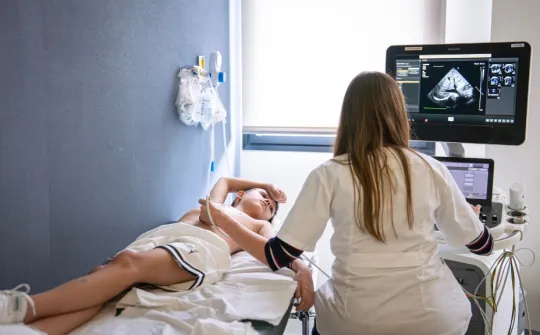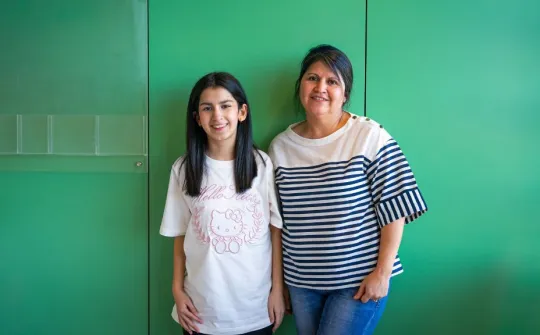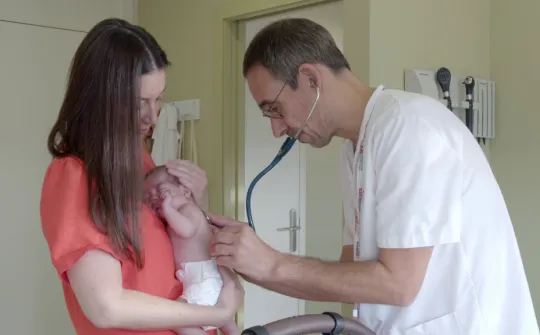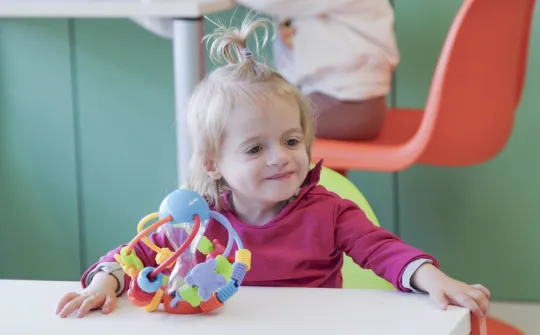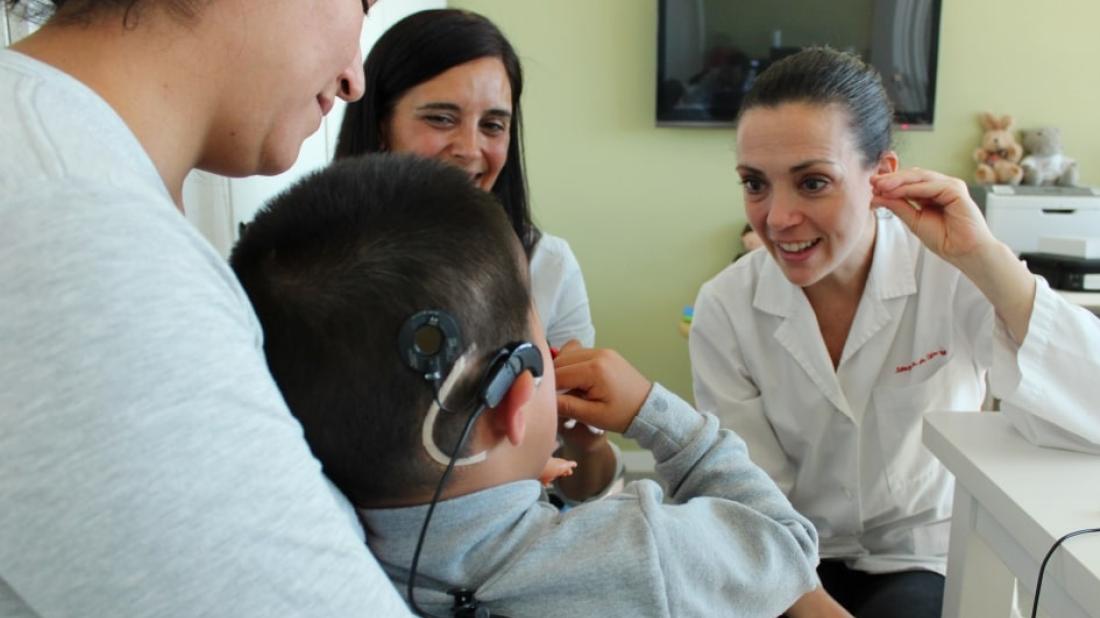
This technique allows the treatment of congenital auditory malformations that in other countries are considered impossible
In some cases where profound hearing loss is detected from birth, the cochlear hearing implant is not a treatment option. This is precisely what happened to Benjamín, a 3-year-old patient from Peru who had a congenital absence of the auditory nerve that caused him profound deafness.
For children who do not have a cochlea or auditory nerve, there is the possibility of placing an implant directly into the brain stem through neurosurgery. Specifically, the intervention consists of implanting a device on the auditory nucleus in the brain stem that is then stimulated to allow patients to perceive sounds.
According to the otorhinolaryngologist Oliver Haag, of the Hospital Sant Joan de Deu Barcelona, the brainstem implant is a different technique to the cochlear implant, it does not offer such a precise recognition of the sounds, but it does allow the recovery of a certain level of hearing on the part of from the patients.
This technique prevents patients from growing totally isolated from their environment, perceiving and recognising sounds in more advanced stages of recovery, and even speaking and understanding oral language with the help of lip reading.
Oliver Haag, pediatric otolaryngologist
Precisely because it is a more invasive intervention than the cochlear implant means that it is only used in cases where the first option is ruled out, which are usually the most severe. Since 2006, only four patients have been treated with the brainstem implant at Sant Joan de Déu Hospital, while about 50 patients with cochlear implants can be treated annually.
Until two years ago, it was difficult to perform this type of technique, which can now be offered thanks to the experience of the Otorhinolaryngology Service and collaboration with the Neurosurgery Service, specifically by José Hinojosa, expert in brainstem access.
“It is not a new technique, but it is not widespread in pediatrics,” Hinojosa explains, adding that in Spain only four centres offer brainstem implantation. “This neurosurgery is more complex in the anatomy of children, but it allows them to become accustomed to the auditory stimulus, something that is not so meaningful when a deaf person reaches adult life.”
The speech therapy intervention is essential in brainstem implants
The combined neurosurgery and otorhinolaryngology intervention was carried out successfully on Benjamín in December 2018 and subsequently the implant had to be activated to check it was functioning correctly.
“In these cases, activation can be annoying for the child the first few times, since they have not consciously heard or perceived sounds before, and sometimes they can be frightened,” explains speech therapist Natalia Coll. Once the implant is activated, it is regulated according to the progress of the child, and the auditory nucleus and central auditory system are directly stimulated .
The Otorhinolaryngology Service has worked on the case jointly with the Educational Resources Centre for the Hearing Impaired (CREDA), to offer monitoring and speech therapy training for almost 6 months.
The speech therapy team has subsequently coordinated with the team that will treat Benjamín in his country of origin to inform them of his progress, which has been favourable so far. Generally we start working with these patients through play, since it is necessary for them to lose their fear of the new sound stimulus.
Since he started using the implant, Benjamín has progressed a lot: he responds to intensesounds and has stopped being scared when he makes some sound himself.
Gabriela Convertini, Benjamin's speech therapist
Although Benjamin will take months to learn to identify more sounds, his eye contact has improved a lot and so has his behaviour.
According to existing literature, patients who are implanted at around two years of age have a good prognosis, since up to the age of four they have time for language acquisition. In all cases a long and intense period of speech therapy is required, since advances are produced in a very gradual way.
Benjamín's mother is satisfied because the implant has made her son relate to his environment, from which he had been isolated, and he is also more receptive. “When we return home we must continue working on this so that he can manage to understand language and communicate in his own way,” she says.
